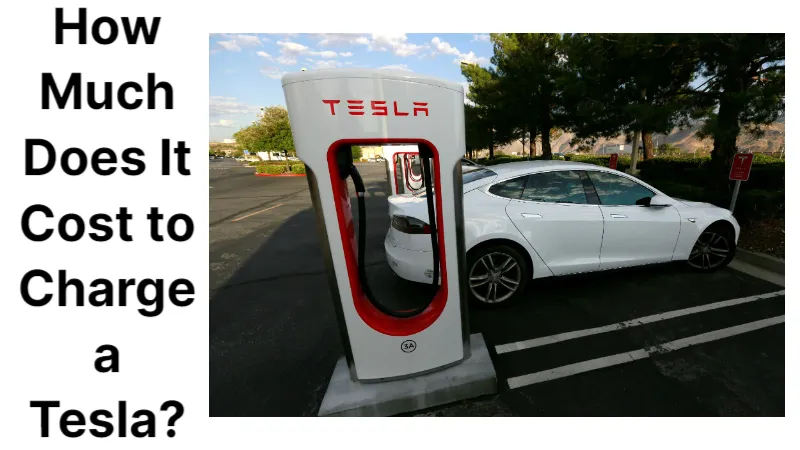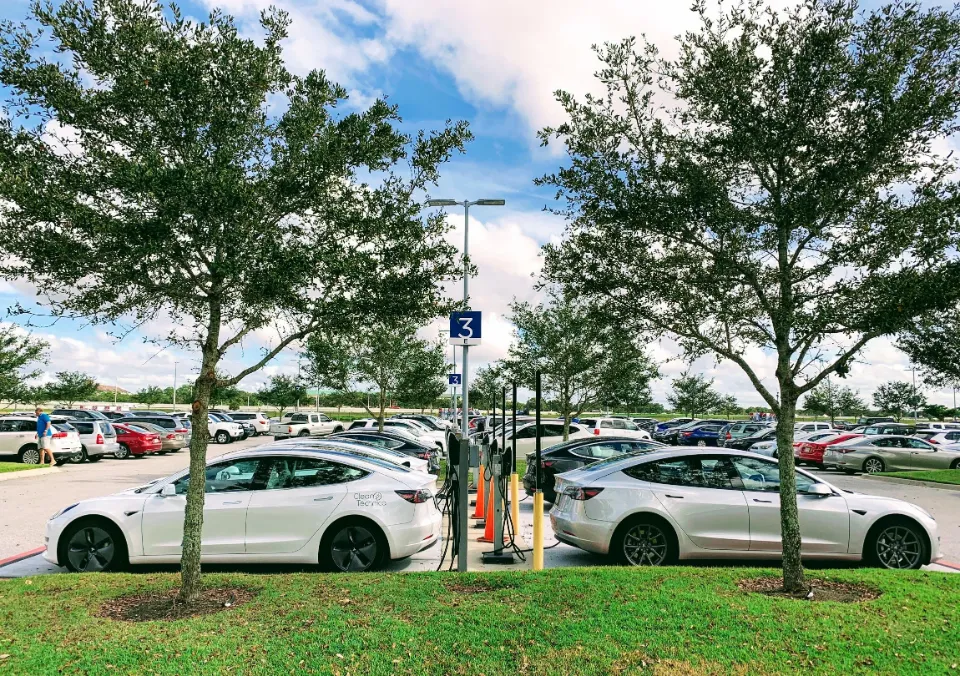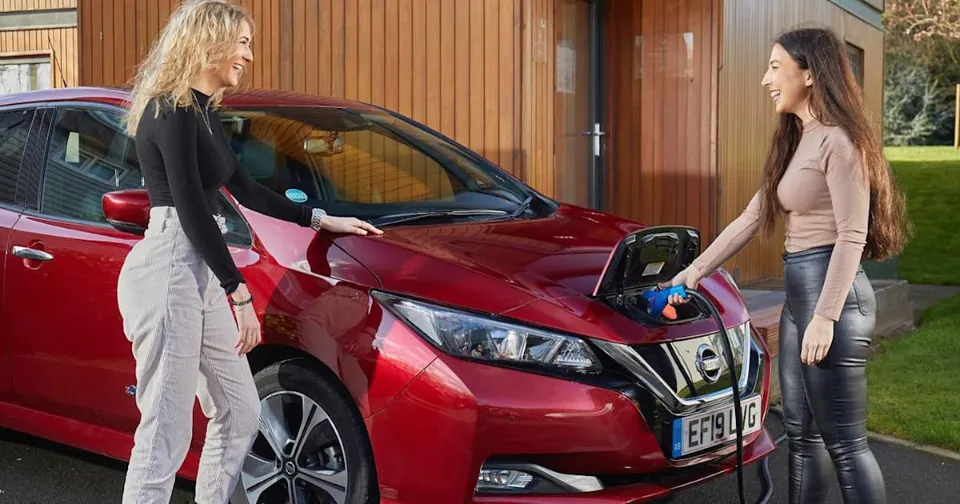“How much does it cost to charge a Tesla?” is probably one of the top concerns on your mind if you’re thinking about buying a Tesla.
Due to absurdly high costs of electricity in 2022 and 2023, the cost to fully charge a Tesla Model 3 Long Range at home increased from $11.25 ($0.15/kWh prices) to over $20 (due to electricity prices spiking over $0.30/kWh), for example. Fully supercharging Model 3 Long Range can cost $37.50 in the US (about $0.50/kWh prices) and $45.00 in Europe has electricity prices of around $0.60.
How Much Does It Cost to Charge a Tesla at Home?
Based on the AC charging capabilities that are available to you at your residence, we will first compare the prices of each Tesla model. We can estimate how much it might cost you to charge your Tessie on average in the US by employing some fairly inventive math.
In the future, if you’d like, you could use this math to calculate a more accurate price in your home state. The US Energy Information Administration (EIA), whose most recent update was in August of 2021, provided the information used to approximate these costs.
We calculated the costs of charging at home using the average US price per kilowatt hour (kWh) for residential energy use. This comes out to $0.1399 per kWh on average, but we’ll round that up to $0.14 to keep things tidy.
To calculate the most recent battery sizes and estimated ranges, we also used the current Tesla models that are available and listed on its website.
A 100 kWh battery pack is a feature of both the Long Range and Plaid Model S, giving us a nice, clear number to work with in our calculations. So you’re looking at $14 for 100 kWh of energy, but hold on! Keeping in mind what we said in the paragraph above, we need to take into account the fact that AC chargers are not entirely efficient in our equation.
Tesla Model S
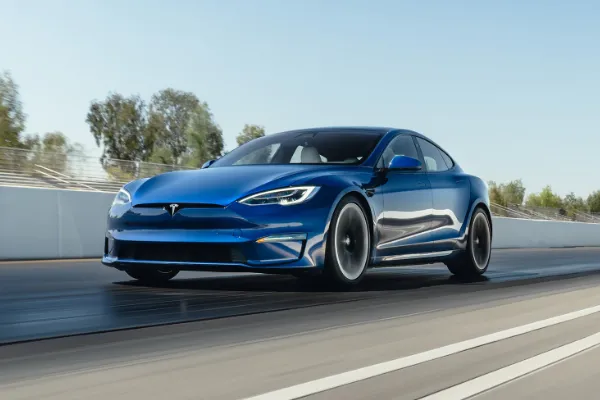
We’ll put the efficiency at 85% because it falls in the middle of the range for Level 1 and Level 2 AC chargers, which is between 80 and 90%. So where were we?
It will cost about $16.47 to charge your Model S from 0 to 100% with a 100 kWh battery at $0.14 per kWh and the 15% extra energy needed due to inefficiency. According to the lifespan of your starting battery, it ought to be less in reality.
Considering that the Model S Long Range’s current estimated range by the EPA is 405 miles, the cost per mile works out to be approximately $0.041, or $4.07 for every additional 100 miles of range.
With a 396-mile estimated range, the Model S Plaid costs $4.22 per 100 miles or $0.042 per mile.
Tesla Model X
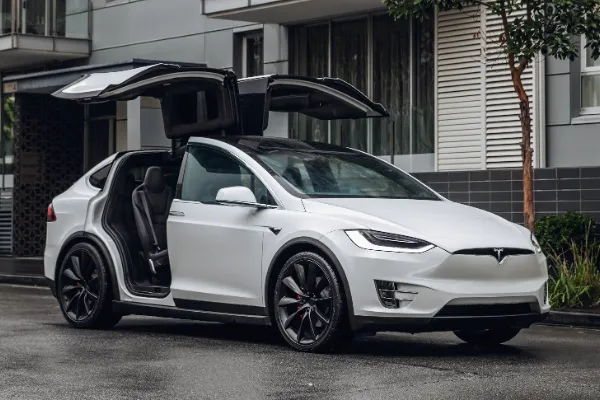
Both of the Model X’s upcoming trim levels include a 100 kWh battery pack, just like its older sedan sibling. Same battery size, same cost: $16.47 to charge your Model X completely from 0% to 100%.
Let’s calculate cost per mile, but keep in mind that the Model X is a bigger, heavier Tesla than the Model S and has a shorter range. The Model X Long Range, which has a 360-mile range estimate, will cost about $0.046 per mile and $4.58 for every 100 miles.
Its 340-mile estimated range costs about $0.048 per mile and $4.84 per 100 miles for the quicker but shorter-range Model X Plaid.
Tesla Model 3
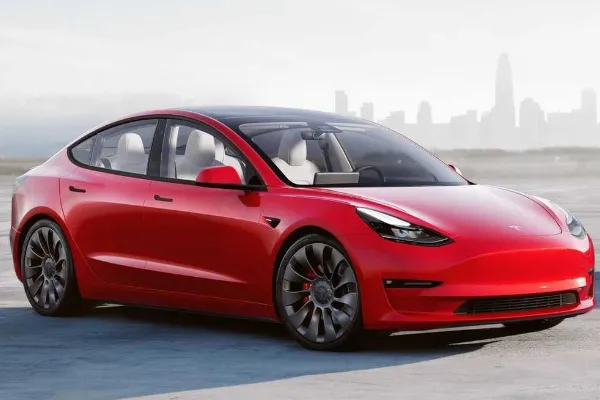
Next, let’s examine the more recent models, starting with the Model 3, which is the least expensive Tesla to date. Due to the different battery sizes in its trims, this Tesla becomes a little more interesting. For instance, the Standard Range Plus Model 3 has a 50 kWh battery, while the Long Range and Performance models have an 82 kWh battery.
Let’s start small and work our way up. For the Tesla Model 3 Standard Range Plus, a 50 kWh battery will cost about $8.24 to fully recharge. Not too shabby.
Range increases with battery size, but range also necessitates more charging. Calculating the Long Range and Performance trims will cost more because longer charging times result in higher costs. 85% charging efficiency results in a cost of $13.51 on average in the US for an 82 kWh battery to charge from 0% to 100%.
Let’s discuss mileage now. With a 353-mile range, as estimated by the EPA, the Long Range Model 3 costs approximately $0.038 per mile and $3.83 every 100 miles. The Model 3’s performance trim is not far behind with an EPA range of 315 miles and costs about $0.043 per mile or $4.39 per 100 miles.
The Standard Range Plus Model 3 comes in last but not least (unless we’re discussing range). It will cost you about $0.032 per mile for its 262-mile range and a very affordable $3.15 for 100 miles of range.
Tesla Model Y
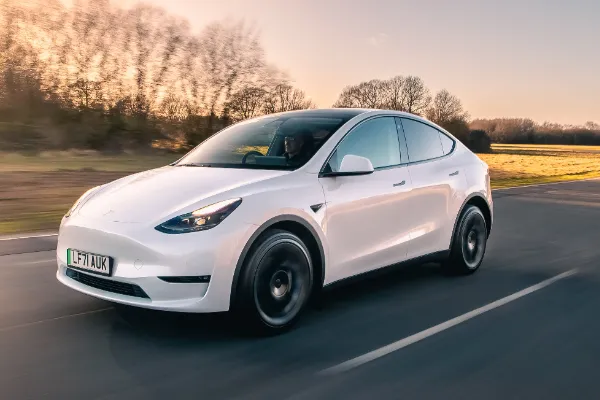
The most recent Tesla to hit US roads is still the Model Y until Cybertruck eventually delivers. The Long Range and Performance versions both come with a 75 kWh battery, and they are both currently offered in two trims.
That implies that a full charge of a Tesla Model Y will cost its owner in the US on average $12.35.
It will cost approximately $0.038 per mile, or $3.79 per 100 miles of range, for the Model Y Long Range and its estimated EPA 326-mile range.
The 303 miles of EPA range on the Tesla Model Y Performance version works out to about $0.041 per mile or, better yet, $4.08 per 100 miles.
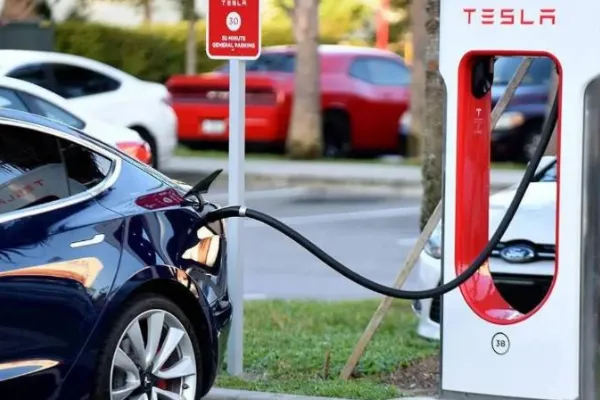
Cost to Charge a Tesla Supercharger/DCFC
Faster DC fast chargers get you fully charged and back on the road, but the price of speed may be higher.
The location where you charge, the rates at the time of charge, and the amount of energy you actually draw from the grid all play a significant role in these prices.
In general, US energy costs are lower. Tesla’s Supercharger network doesn’t always use commercial rates, and it certainly doesn’t charge customers that little.
We’ll once more use information from the EIA to determine the typical energy costs in the US, just like we did for the residential figures. However, we will include an extra $0.10 per kWh to reflect this upcharge that is present on DC Fast Chargers. With $0.216 per kWh as a result, we can confidently round up to a refreshing 22 cents.
In comparison to Level 1 and Level 2 charging, DCFCs like Tesla Superchargers are much more efficient because they directly snag DC power without having to convert it for your EV’s battery. Since charging efficiencies can range from 90% to 99%, we’ll use 95% for our estimates.
Tesla Model Y
The youngest will be the starting point this time, and we’ll work our way up. You already know that the Model Y has a 75 kWh battery. The cost to charge the Tesla on a Supercharger or DCFC equivalent comes to $17.21 when you multiply that by the typical commercial cost of $0.22 per kWh and take 95% efficiency into account.
The Long Range Model Y costs approximately $0.053 per mile, or $5.28 per 100 miles, when expressed in terms of mileage.
On the other hand, you’ll pay $5.68 for a Performance Model Y, which has a range of 100 miles and costs about $0.057 per mile.
Tesla Model 3
The 50 kWh battery on the Standard Range Plus Model 3 will cost about $11.47 to fully charge, whereas the 82 kWh batteries on the other trims will cost you about $18.82 each. Next, let’s look at the least expensive Tesla.
Approximately $0.044 per mile and $4.38 for 100 miles of range are the costs associated with a Standard Range Plus Model 3. The Performance Model 3 will cost about $5.97 for 100 miles and approximately $0.060 per mile, with a range of 315 miles.
Last but not least, the 353 miles on the Long Range 3 translate to roughly $0.053 per mile and roughly $5.33 per 100 miles.
Tesla Model X
Our final two Tesla models, which each have a 100 kWh battery pack, ought to sell quickly. Accordingly, it will cost about $22.95 to charge a Model X via DC Fast Charging to 100% after accounting for battery efficiency of 95%.
But there are differences in the cost per mile. While the 340 miles on the Plaid will cost about $0.068 per mile or $6.75 for 100 miles of range, the Long Range Model X costs about $0.064 per mile and $6.37 for 100 miles.
Tesla Model S
The 100 kWh battery (mentioned above) is also present in both Model S models. So let’s move on to the price per mile right away.
For the Long Range Model S, the cost per mile works out to be $0.057 and the cost of 100 miles of range to be about $5.67. With a lower predicted range, the Model S Plaid will cost you approximately $0.059 per mile and $5.88 per 100 miles.
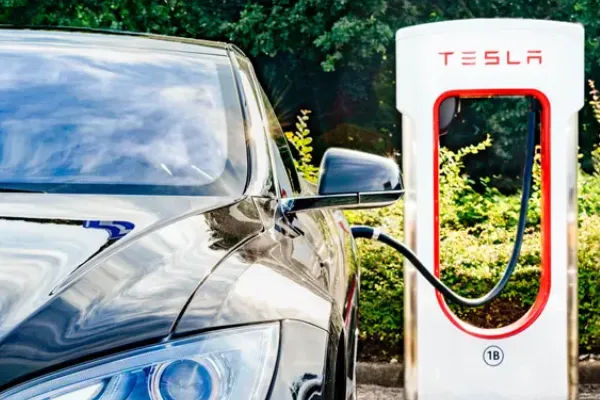
Important Terms and Vocabulary
Let’s clarify the meaning of various terms for our calculations and general understanding before diving into the math for three of the Tesla models to make sure we’re all on the same page.
kW: a shorthand for kilowatt, a unit of energy used to represent electrical power.
kWh: a shortened form of kilowatt-hour, which is the amount of electricity used when 1,000 watts are used for one hour. Similar to the fuel tank sizes of gas-powered cars, the sizes of Tesla battery packs are expressed in kWh. Generally speaking, your electric car may have more energy and a longer range the higher the battery capacity in kWh.
kWh battery: Battery sizes for Tesla vehicles typically range from 50 kWh to 100 kWh. The kind of charging station you use affects how quickly your battery charges.
Level 1 charging: The typical three-prong 120-volt outlet that is present in most homes allows for home charging. For this kind of charging, your Tesla should have a mobile connector and adapter. This is not a fast-charging choice. With an average range of 3-5 miles per hour of charging, it is the slowest and frequently least effective charging option for Tesla vehicles.
Level 2 charging: This method of charging a Tesla vehicle is frequently the quickest one available for use at home or in an office, using a 240-volt Wall Connector. Despite not being as quick or as effective as a Tesla Supercharger, a Wall Connector can charge an electric vehicle up to 44 miles of range per hour. Wall Connectors must be purchased and installed by licensed electricians. You might also be able to connect to a 240-volt outlet that already exists by using an adapter.
Level 3 charging: The quickest and most effective charging method is a Tesla Supercharger. Providing 480+ volts of power, they are directly connected to the grid. Up to 1,000 miles of range can be charged in an hour using a supercharger. Fast charging for Tesla customers is available at more than 30,000 supercharger stations around the world.
Destination charging: a collection of establishments and other places where Wall Connectors are made accessible for public charging. When traveling far from home, such as on a road trip, this kind of charging network may make sense.
Tesla models: The Model S, Model 3, Model X, and Model Y are some of the current plug-in electric Tesla models.
Read about
Can You Save Money by Charging Your Tesla With Solar?
According to The Office of Energy Efficiency & Renewable Energy, solar energy was about 12.8 cents per kWh in residential areas in 2020. That works out to about 13 cents per kWh, or almost a full cent less than what is thought to be the national average price of electricity in the US. This means that, depending on where you live, charging your Tesla with solar panels could result in greater financial savings. A difference between California and New Jersey, for instance, might exist.
Summary: How Much Does It Cost to Charge a Tesla?
Due to absurdly high costs of electricity in 2022 and 2023, the cost to fully charge a Tesla Model 3 Long Range at home increased from $11.25 ($0.15/kWh prices) to over $20 (due to electricity prices spiking over $0.30/kWh), for example. Fully supercharging Model 3 Long Range can cost $37.50 in the US (about $0.50/kWh prices) and $45.00 in Europe (about $0.60 electricity prices).
Read about How Long Does It Take to Charge a Tesla?
Frequently Asked Questions
How Much Does Your Monthly Electricity Bill Go Up With a Tesla?
U.S. motorists generally. travels about 1,100 miles each month. The cost per mile for charging is 4.56 cents on average for all Tesla products. So, if you only charge your Tesla at home, you can expect your electricity bill to increase by about $50 each month.
How Long Does It Take to Charge a Tesla?
You most likely have a Level 1 charger (120 volts, standard outlet) or a Level 2 charger (208 or 240 volts) if you’re charging your Tesla at home. A Level 1 charger should take 20 to 40 hours to fully charge your Tesla, while a Level 2 charger should finish the job in 8 to 12 hours.
It should only require 20 to 30 minutes to fully charge your Tesla at a Level 3 charging station, such as a Tesla Supercharger.
How Long Do Teslas Last?
In a 2019 tweet, Tesla CEO Elon Musk claimed that the Model 3 product line is “designed like a commercial truck for a million-mile life.” However, he estimates that the current batteries in the vehicles should last between 300,000 and 500,000 miles, or about 1,500 cycles – the number of complete charges. Providing you adhere to American law average and drive 13,200 miles annually, this means you can expect your Tesla to last between 23 and 38 years.
Do You Have to Pay to Charge a Tesla?
In most cases, charging a Tesla is not free. The only exception is that most Tesla owners must pay a Supercharging fee if they own a Model S or Model X that was purchased in 2017 or earlier. Additionally, Tesla previously offered some referral bonuses in the form of free Supercharging credits. If you do have any free Supercharging miles available, they’ll appear in your Tesla account. However, destination charging is typically free.
The one way to charge your Tesla for “free” is to charge it from a home solar panel installation.

